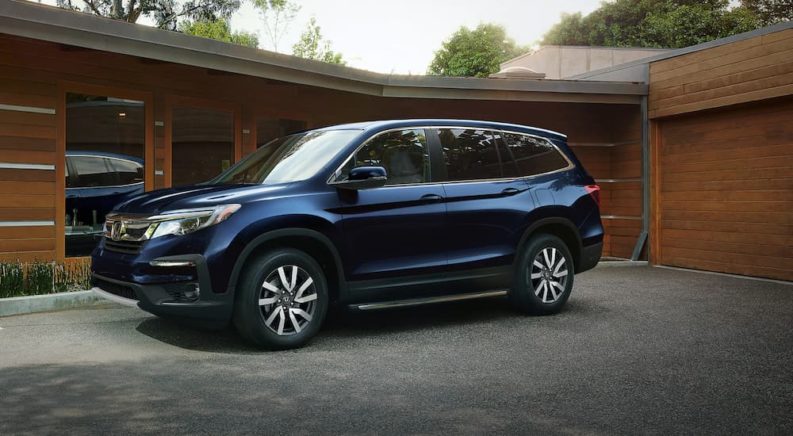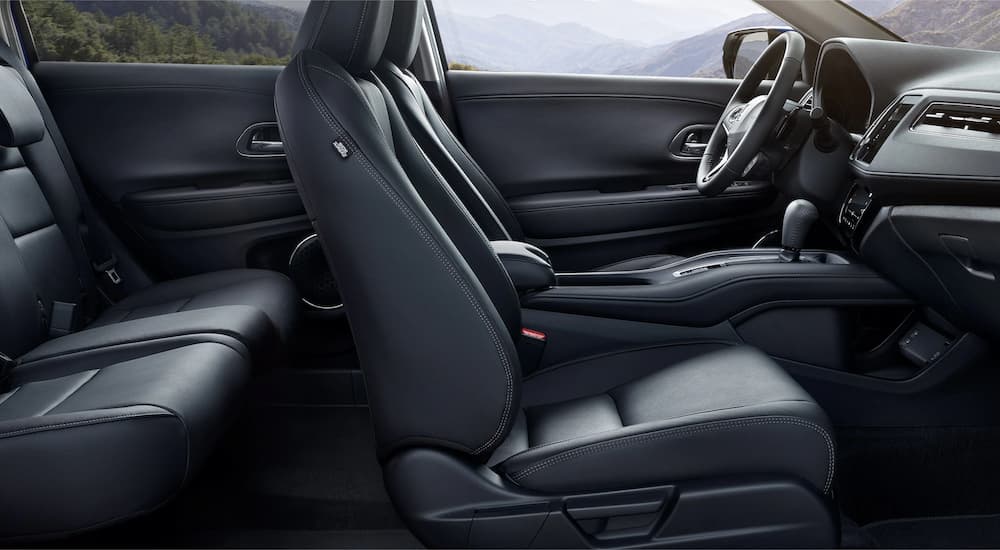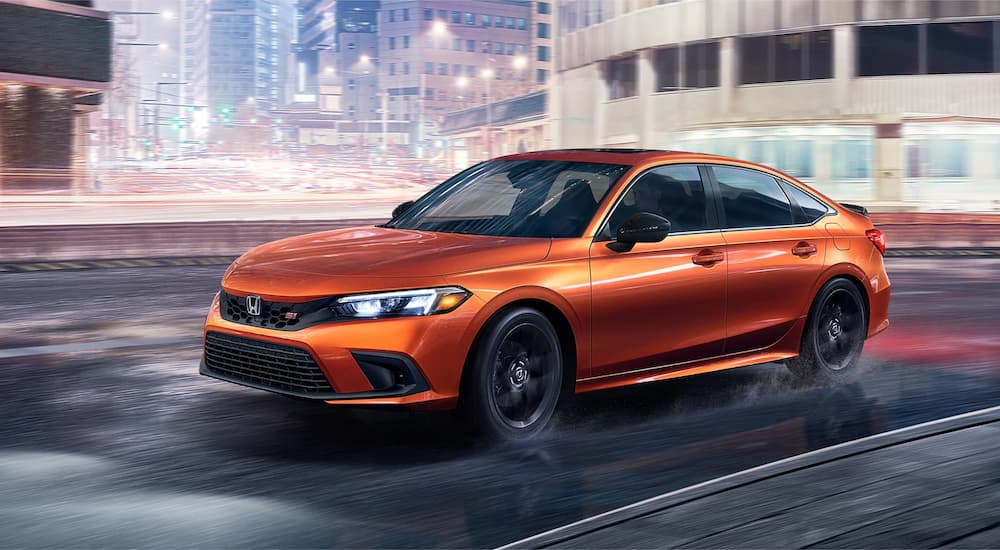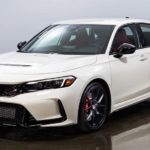Fuel efficiency, always an important metric when purchasing or leasing a car, has arguably become the number one consideration on the modern customer’s mind when walking into a dealership. Last spring’s sky-high gas prices will not be quickly forgotten; gas stations could barely change their signs fast enough as prices were hiked again and again. Each day I drove past my local gas station, I felt like the price had shot up another ten cents, and I started wondering if I’d have to begin running to work instead. While these prices eventually lowered, consumers understandably worry about what the future holds and desire cars that don’t guzzle gas.
Honda vehicles may be the answer for those concerned about future gas hikes. Customers walking into a Honda dealer discover that Hondas tend to beat the market when it comes to fuel economy. This is not a new phenomenon for Honda: the manufacturer has been crafting some of the most fuel-efficient cars available since the Environmental Protection Agency (EPA) started releasing rankings in the 1970s. By all accounts, Honda does not plan to lose its top spot anytime soon.
By branding itself as a fuel-efficient manufacturer, Honda has earned lifelong customers who value gas mileage when picking out their new car. After last spring, there will be a lot more customers who value just that. Honda is not set on stopping there, though. The company has been shifting to embrace sustainability beyond advocating for fuel efficiency. While the manufacturer has come far in its planning, seeds of this approach were planted long ago.
How Honda Gained Its Reputation
Despite Honda now having worldwide reach, the company started small. Its earliest products? Well, they had wheels, but they were not cars. Instead, just after World War Two, Honda entered the market by offering bicycles for sale, albeit ones with auxiliary engines. Perhaps these humble beginnings foretold that Honda planned to remain in the fuel efficiency game; there are few vehicles more fuel-efficient than a bicycle, after all.
Before long, Honda began producing motorcycles. From there, it was a quick hop to automobiles. By 1962, the company went global, opening its first factory outside of Japan. The location chosen? Belgium. Perhaps not the expected first foreign locale, but Honda often took surprising routes. The company, for instance, began researching the impact of fuel economy in the 1960s, interested in developing cars that earned better mileage and released fewer emissions. Honda had many governments beat when it came to considering environmental impacts. It would take the United States’ regulatory agencies until the 1970s to catch up.
What Caused Consumers to Pay Attention?
In the 1970s, concerns about fuel economy hit hard around the globe. First, the gas crisis in the early 1970s caused consumers to become more concerned about how much they would have to spend on gasoline. Gas had always been a factor when budgeting, sure, but this crisis was intense and changed consumers’ mindsets forever. In 1974, the average price of gas in the United States reached $0.55 a gallon. Sounds cheap now, but that was an astronomical increase from a year earlier when it averaged $0.39 a gallon. More importantly, the price per gallon sometimes did not even matter: some gas stations had no gasoline to sell thanks to shortages. Suddenly, a car with low fuel efficiency was not just expensive; it might not have been driveable.
Second, the EPA began measuring fuel efficiency. Now, consumers could easily see which cars guzzled gas and which could easily coast without burning tons of fuel. At the same time, energy taxes were implemented to persuade the average American not to purchase vehicles with poor fuel efficiency. Environmentalists had been pushing the United States government to better regulate the auto industry, and legislation soon followed.
In 1976, when the EPA released its first fuel efficiency ranking, the car in the number one spot was not an American model. Instead, it was the Honda Civic. With great fuel efficiency and low emissions, the Honda Civic skyrocketed in the public consciousness. Those who previously ignored the model now saw potential thanks to its affordability and efficiency.
What Made the Civic Stand Out?
As countries like the United States began to put more stringent limits on engines, Honda produced the low-emission CVCC (Compound Vortex Controlled Combustion) engine. This resulted in Honda’s ability to comply with new regulations, such as the US Clean Air Act, almost immediately. The CVCC engine allowed the Civic to meet the environmental expectations of the time without driving up the cost for the consumer.
For Americans willing to look at foreign cars, the Civic became a very attractive option. As the Civic developed over the next decade, the CVCC engine became more refined; thus, the car drove better while costing less in the long run, thanks to superior mileage. By the end of the 1970s, the Honda Civic’s fuel efficiency reputation was firmly in place.
Keeping the Reputation
Instead of resting on its laurels, Honda made sure that its reputation remained intact as the millennium came to a close. Branding is an essential element of business success, and Honda hoped making fuel efficiency part of its brand would pay dividends down the line. The company’s bet that this would bring in customers proved correct.
In the 1990s, the Civic started to use a natural gas engine, a type of engine that curbed pollution compared to the engines of the time. This development made the Civic unique in the United States as no other cars offered such an engine. In fact, it would be almost a decade before another manufacturer embraced the new technology. While natural gas would evolve into a buzzword down the line, the Civic was well ahead of the game.
Honda also made certain to retain its high EPA fuel efficiency rankings, making it an excellent choice for those worried about the environment and those concerned about volatile gas prices. As last winter and spring reminded the world, fuel crises can happen when you least expect them. Gasoline prices were low during the early months of the pandemic, but two years later, they surged due to supply chain issues and the war in Ukraine. Gas crises tend not to announce themselves in advance, and plenty of customers now want to be ready ahead of time.
Honda’s knack for staying at the top of the EPA’s fuel efficiency list is an impressive feat as its competitors also try to respond to the market’s demand for fuel-efficient vehicles. In order to keep its place, Honda may have to adjust to new types of automobiles. That won’t be a problem, though; Honda has done it before.
How Does Honda Plan to Stay On Top?
Electric cars have become the name of the game, and Honda knows a good deal when it sees one. The EV has steadily gained ground this past decade, and Honda plans to not only meet this growing demand but to create more of it by attracting skeptics. The manufacturer plans to have 30 percent of its new automobiles electrified by 2030. This aggressive plan signals it has great faith in electric vehicles instead of viewing their current popularity as a brief fad. This will not be the first time Honda has transitioned to a new type of automobile. It has already succeeded with hybrid models, such as its 2022 Honda CR-V Hybrid, which gets 38 MPG combined despite being roomier than its predecessors.
Environmental sustainability has become a part of the company’s identity. While its cars are as fuel efficient as ever, Honda has also started the “Blue Skies for Our Children” pledge, which is its project to create a zero-impact company. Recently, Honda has laid out a concrete plan for its goals, forcing itself to be accountable. For instance, it hopes to have a zero environmental impact approach to not just its cars but to all of its products by 2050. These target dates are laid out in its Triple Action to Zero plan. In short, Honda knows the world faces difficult environmental problems and wants to be an act ive part of the solution.
Why Honda’s Fuel Efficiency Brings in Consumers
When someone strolls into a dealership to purchase their new car, there are a lot of factors on their mind. While fuel efficiency has always been a consideration, its importance has only grown. Gas crises and environmental concerns affect consumers’ purchases, and car manufacturers that are proactive instead of reactive will reap the benefits. Young buyers rank the environment as a greater concern than their parents, which means manufacturers will have to cater to this new market differently than past generations.
Honda has the advantage of beating a lot of the regulators when it comes to strict standards. Instead of having to start from scratch when new standards are put in place, Honda vehicles have usually switched to new, fuel-efficient technology well beforehand. For those who want to take long drives without worrying about racking up a ridiculous bill, Honda’s cars prove the perfect fit. While its vehicles are affordable, to begin with, their long-term costs are equally attractive. Thanks to good fuel efficiency, drivers’ gas bills can be considerably lower, even in worst-case scenarios.






